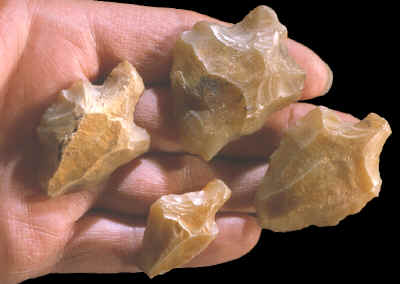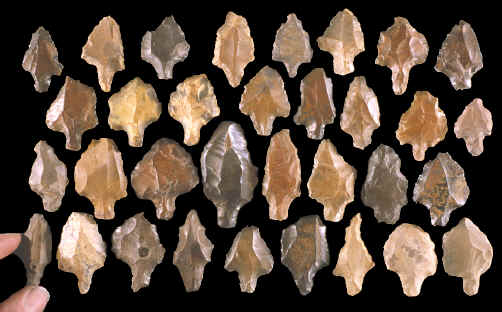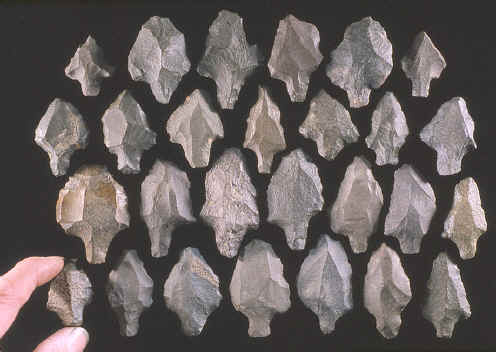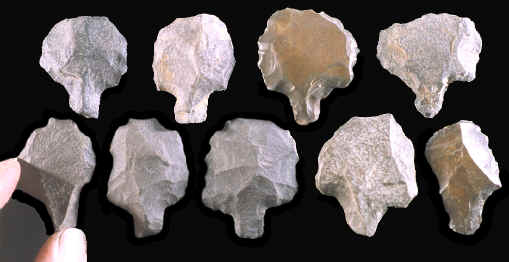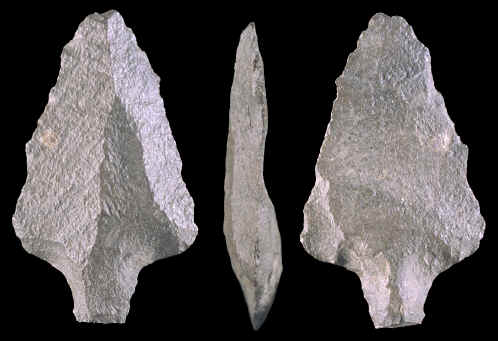|
|
|
Aterian points vary considerably in size from a little over an inch (3 cm) to about 8 or 9 inches (20 to 22 cm) long. The smaller points were undoubtedly used on darts or spears that were thrown by atlatls. The larger examples may have been used on thrusting spears or as knives. |
|
|
Aterian stemmed points were made from a range of high and low quality materials. The majority of the examples in the collection shown here were made from various cherts of fairly good quality. A very few of them are made of a semi-translucent material that might compare to good quality agate or chalcedony. Several others are made from a grainy material that may be basalt. The majority of these points are heavily patinated with a desert varnish caused from wind blown sand. |
|
|
Tanged or stemmed Aterian points are heavy duty points of simple design. They were made from thick flakes that were flaked to a point on one end and notched on either side of the bulb-of-percussion to form wide shoulders and a tang on the other end. Aterian points are not the most skillfully crafted projectile point but they were obviously a successful design. |
|
|
|
|
Forty thousand years ago, northern Africa was a green savanna grassland. The Aterian people were spreading out into what is today the Sahara desert. This climatic improvement also brought large numbers of grazing animals. The Aterian site called BT-14 is described as a huge Aterian kill site. Aterian hunters were taking both large and small species such as, white rhinoceros, extinct camel, large bovid, wild ass, gazelle, fox, jackal, warthog, antelopes, ostrich, turtle and birds. |
|
|
Stemmed Aterian points are not the best looking projectile points in the world, especially if you compared them to later examples from other regions. But their prolific numbers and their apparent success at hunting both large and small game proves they were the perfect tool for their time. Aterian people were doing pretty well to produce such an ingenious invention using Neanderthal technology. |
|
|
"REFERENCES"
1946,
Canton-Thompson, G., "The Aterian Industry: Its Place and
Significance In The Paleolithic World," The Huxley Memorial
Lecture for 1946, p.89. |
|
